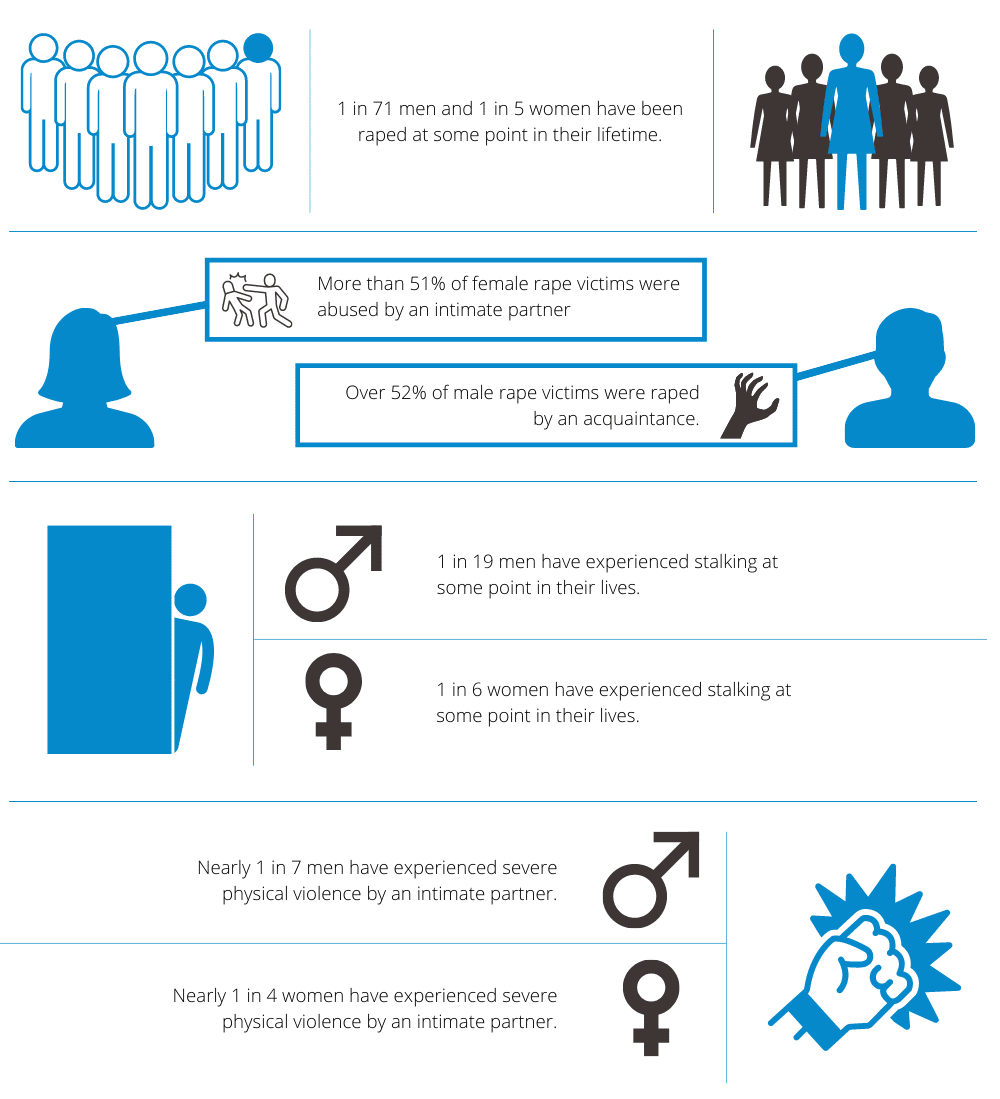Domestic Violence Awareness Month: How Does Experiencing Domestic Violence Lead to Substance Abuse?

Medically Verified: 2/1/24
Medical Reviewer
Chief Editor

All of the information on this page has been reviewed and verified by a certified addiction professional.
Domestic violence is extremely common, with nearly 20 people per minute being abused by an intimate partner in the United States.[1] Experiencing domestic violence is a severe form of trauma, which often causes symptoms such as depression, anxiety, and PTSD. As a result, many survivors of domestic violence turn to substance abuse as an attempt to soothe the feelings and memories of trauma they experience.
Let’s take a look at what domestic violence is, how it affects the victim, and how domestic violence leads to substance abuse.
What is Domestic Violence?
Domestic violence is violence that is committed by someone (partners, ex-partners, family members, family friends, and relatives) in the victim’s domestic circle. The term “domestic violence” is used when there is a close relationship between the victim and the offender. In cases of domestic violence, the victim is financially or physically dependent on the offender. This makes it easier for the offender to continue their abuse and harder for the victim to escape it.
Domestic violence can take many forms, including physical, sexual, and psychological abuse. Additionally, domestic violence is a pattern of behavior that is used to control and maintain power over an intimate partner or family member.
Types of Abusive Behavior
Unfortunately, some people may not realize that what they are experiencing is abuse. Typically, people view domestic violence and abuse as a husband hitting or physically hurting their wife. However, domestic abuse happens to every gender, is committed by every gender, and is not only physical. Let’s take a look at the main types of abusive behavior.
Physical and Sexual
Physical abuse is the most discussed form of domestic violence. This may include hitting, slapping, kicking, pushing, biting, or any other method of inflicting pain on an intimate partner or family member.
Sexual abuse is a form of physical abuse. Sexual abuse is described as engaging in any sexual act against someone’s will or forcing someone to have sex.
Emotional
Emotional abuse is a psychological approach to domestic violence that is not discussed enough. While physical violence leaves obvious marks or scars, emotional abuse leaves internal scars. Both forms of abuse are equally damaging, but emotional abuse is harder to identify than physical abuse.
Emotional abuse may include name-calling or put-downs as well as making someone feel crazy (gaslighting), guilty, or badly about themselves and blaming them for the abuse.
Threats, Intimidation, and Coercion
Emotional abusers may use threats, intimidation, and coercion as a form of abuse. Using these tactics allows the offender to gain emotional leverage over their victim. In other words, by intimidating and threatening the victim, they feel as if they have no choice but to allow the abuse to continue.
Threats, intimidation, and coercion may include the following tactics:
- Glares and facial expressions
- Showing someone a weapon
- Abusing pets to make a point
- Smashing or breaking things
- Carrying out threats to hurt the victim
- Threatening to commit suicide
- Threats to leave or get a divorce
- Using child protective services, immigration, or welfare as threats
Isolation
Isolation is a form of abuse that works by controlling where someone goes, what they do, and who they talk to. This keeps the victim away from their family and friends, allowing the offender to continue the abuse without anyone knowing it is happening.
Economic and Financial
Economic and financial abuse involves the offender not allowing their victim to work or manage their own money. This may include not allowing the victim to have their own bank account, giving an “allowance”, or manipulating the victim into feeling like they are incapable of working or handling money.
The Connection Between Domestic Violence and Substance Abuse
Substance abuse and domestic violence have a complicated relationship. Substance abuse can lead to domestic violence, while domestic violence can also lead to substance abuse. Let’s take a look at the two main ways that domestic violence and substance abuse relate to one another.
Why Addicts Are More Likely to Become a Victim of Domestic Violence
Substance abuse has been found to be a risk factor for being assaulted by domestic partners. Additionally, addiction has been proven to cause individuals to become victims of domestic violence.
When an individual abuses substances, their cognitive abilities are impaired. Even further, an individual with violent tendencies who abuses substances might experience an increase in their violent thoughts, causing them to act out those thoughts. This is one of the many ways that substance abuse leads to domestic violence.
On the other hand, individuals who abuse substances may fall victim to domestic violence. This happens because addiction changes an individual’s environment and friend circles. Instead of being around stable individuals, the person will be hanging out with and even living with other addicts or mentally unstable individuals. This puts them in a dangerous situation and leaves them vulnerable to domestic violence.
Why Domestic Violence Causes Substance Abuse
Domestic violence causes an array of mental and emotional issues. Unfortunately, many men and women who fall victim to domestic violence cannot access the help they need to recover. Because of this, many domestic violence victims begin abusing drugs or alcohol to self-medicate or cope with the abuse they are experiencing or have experienced in the past.
According to studies, the main cause of female alcoholism is a history of domestic violence. Additionally, the risk of drug abuse becomes 9 times higher after a woman experiences domestic abuse.[2]
Domestic Violence and Substance Abuse Statistics
While the exact connection between domestic violence and substance abuse is difficult to pinpoint, statistics show an undeniable link between the two issues.
The following statistics were provided by the National Intimate Partner and Sexual Violence Survey:[3]

Treatment for Domestic Violence and Addiction
If you or a loved one have experienced domestic violence and addiction, help is available. Attending professional treatment that includes a focus on mental health and trauma recovery is vital to the healing process. Contact Carolina Recovery today for more information on our substance abuse treatment program. We can provide you with a safe and confidential place to heal.
References:

